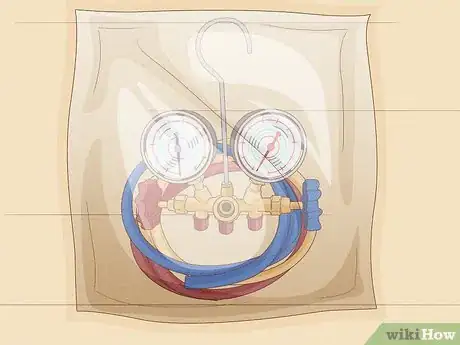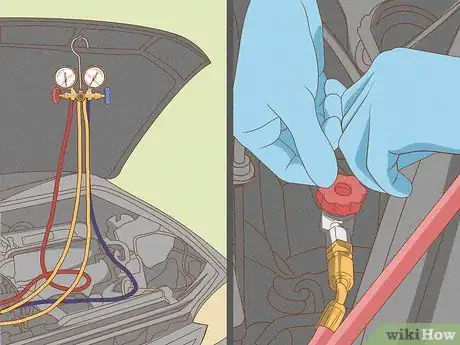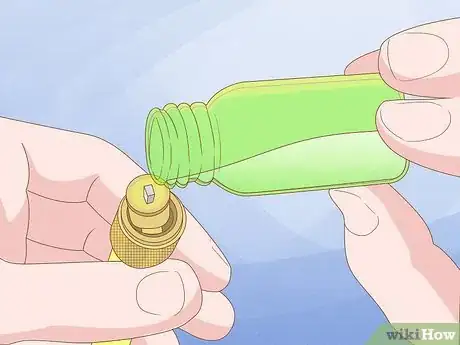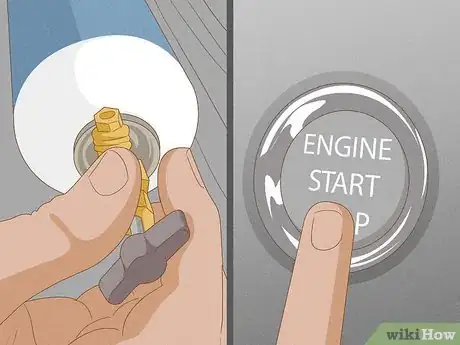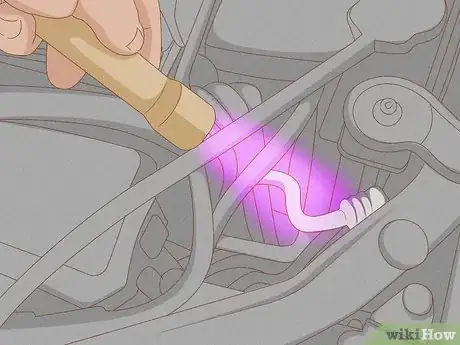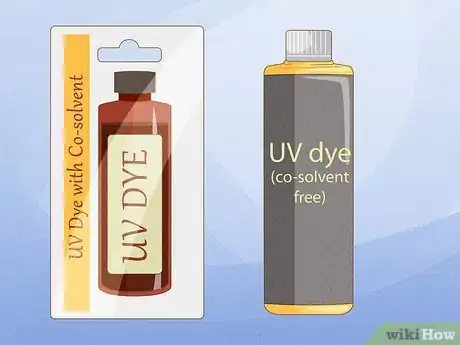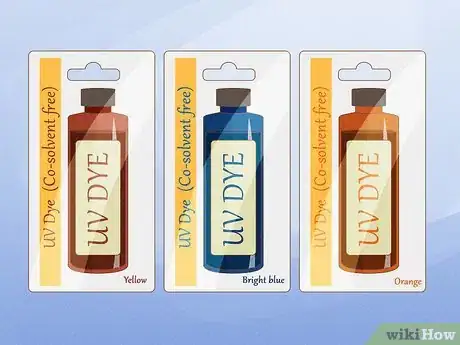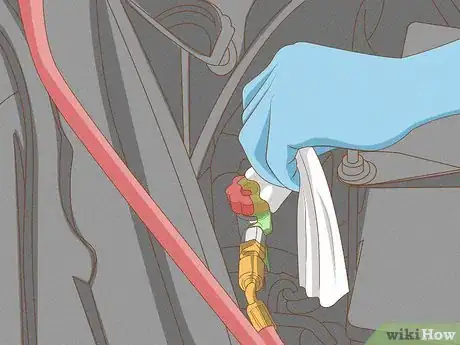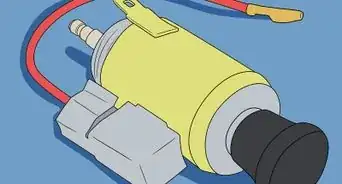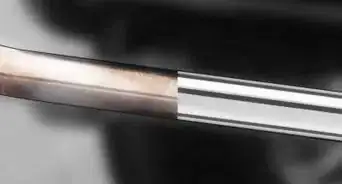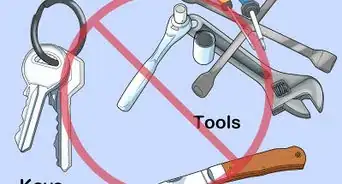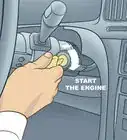This article was co-authored by Ed Beery and by wikiHow staff writer, Eric McClure. Ed Beery is an Automotive Specialist and the Owner of InTechgrity Automotive Excellence based in Denver, Colorado. With more than eight years of experience, he specializes in providing maintenance and repair services for both individuals and companies. Ed and the InTechgrity Automotive Excellence Team are approved by the American Automobile Association (AAA) for repairs and are Automotive Service Excellence (ASE) certified.
There are 15 references cited in this article, which can be found at the bottom of the page.
This article has been viewed 19,826 times.
If the air conditioner in your vehicle is blowing hot air out when you turn it on, you may have a refrigerant leak. Since your air conditioning system is pretty big, finding the source of the leak can be difficult. This is where injecting UV dye comes in! By using a manifold gauge to inject ultraviolet dye into your AC system, you’ll have a much easier time spotting the leak by looking for spots where the fluorescent color leaks out. Keep in mind, this is not a beginner-level process, and you’re better off taking the vehicle to a mechanic if you don’t have experience working on your vehicle’s AC system.
Steps
Warnings
- If you aren’t mechanically inclined and you don’t have any experience working on AC lines or using a manifold gauge, you’re better off taking your vehicle to a mechanic. This is not an easy process, and diagnosing AC leaks can be kind of tricky.[20]⧼thumbs_response⧽
- UV dye injection is also used by HVAC technicians to diagnose leaks in central air units. Unfortunately, you cannot do this yourself. HVAC refrigeration lines contain Freon, which is toxic. You also can’t fidget around with a central air system if you aren’t a qualified technician for safety reasons.[21]⧼thumbs_response⧽
References
- ↑ https://www.popularmechanics.com/cars/car-technology/a23081914/car-ac-myths-repair-r12-vs-r134s/
- ↑ https://youtu.be/J2e9ALeFOm4?t=35
- ↑ https://youtu.be/J2e9ALeFOm4?t=22
- ↑ https://www.popularmechanics.com/cars/car-technology/a23081914/car-ac-myths-repair-r12-vs-r134s/
- ↑ https://tucson.com/news/local/east/diy-air-conditioning-recharging-isnt-worth-the-savings/article_9bbb36fb-3c26-52e8-9676-6270737e03f3.html
- ↑ https://www.popularmechanics.com/cars/car-technology/a23081914/car-ac-myths-repair-r12-vs-r134s/
- ↑ https://trusthomesense.com/blog/3-tests-for-air-conditioner-refrigerant-leaks/
- ↑ https://youtu.be/QKmbO3rAd3Q?t=37
- ↑ https://youtu.be/QKmbO3rAd3Q?t=115
- ↑ https://youtu.be/EunuZwaAsKg?t=113
- ↑ https://youtu.be/EunuZwaAsKg?t=146
- ↑ https://www.knowyourparts.com/technical-resources/tools/fluorescent-dye-leak-detection-benefit-heavy-duty-fleet/
- ↑ https://www.knowyourparts.com/technical-resources/tools/fluorescent-dye-leak-detection-benefit-heavy-duty-fleet/
- ↑ https://youtu.be/FgCLGXTlim0?t=49
- ↑ https://www.knowyourparts.com/technical-resources/tools/fluorescent-dye-leak-detection-benefit-heavy-duty-fleet/
- ↑ https://youtu.be/tZn9hd3JyXo?t=31
- ↑ https://spectroline.com/tips-cleaning-avoiding-fluorescent-dye-spills/
- ↑ https://youtu.be/0u3ZYcxpFrI?t=56
- ↑ https://youtu.be/FgCLGXTlim0?t=69
- ↑ https://tucson.com/news/local/east/diy-air-conditioning-recharging-isnt-worth-the-savings/article_9bbb36fb-3c26-52e8-9676-6270737e03f3.html
- ↑ https://trusthomesense.com/blog/3-tests-for-air-conditioner-refrigerant-leaks/

